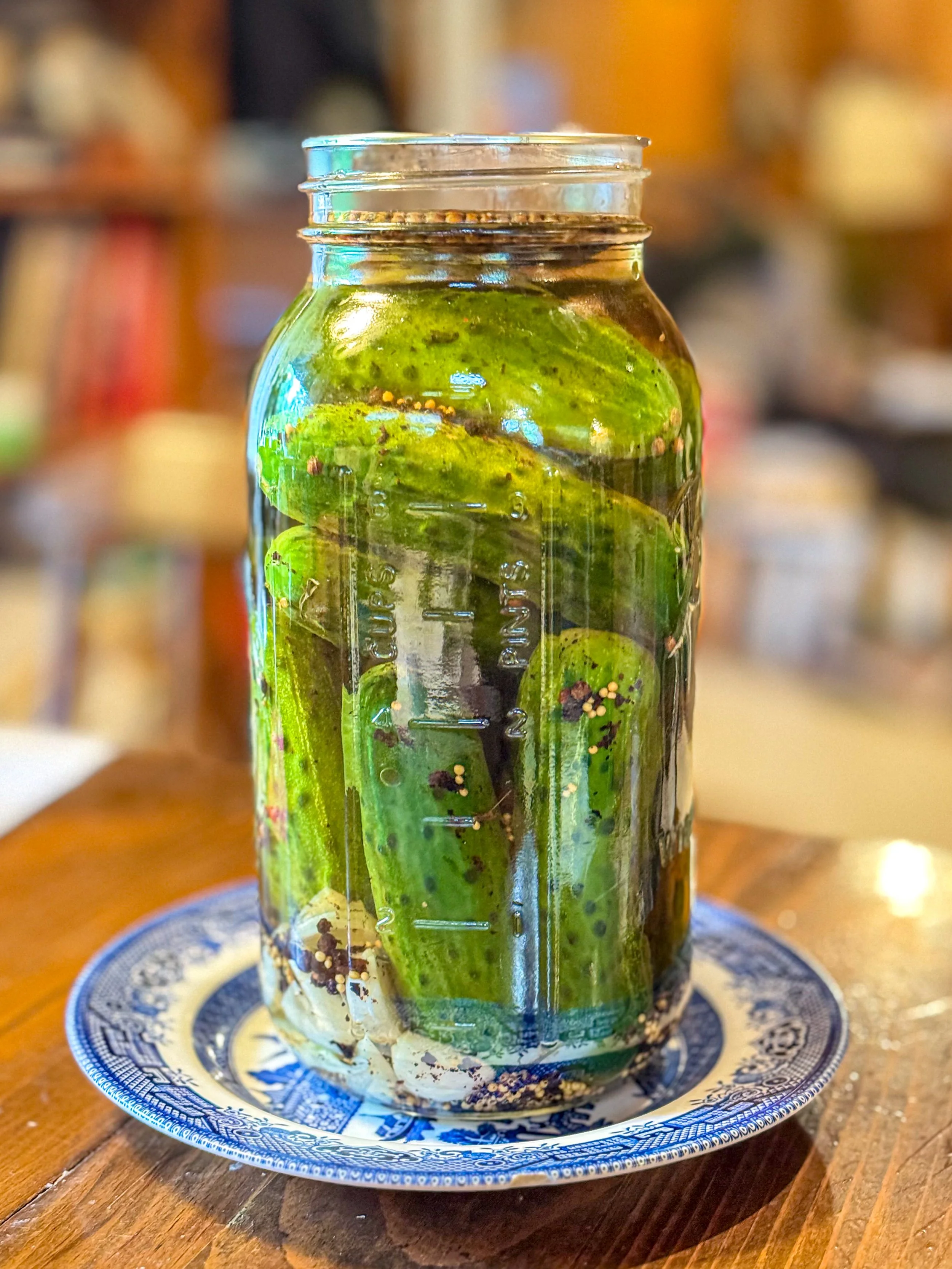Cookbook of the Week: Insane in the Brine by Danny Berke
I don’t know about you, but my garden is overflowing with cucumbers. If not your garden, perhaps your favorite farmstead? In any case, I’m here to talk about pickles, and the difference between pickling and fermenting.
Pickling involves using vinegar + flavorful herbs, spices and allies (a.k.a. things in the onion/garlic family) to preserve an item. The acidity of the vinegar helps protect the food from spoilage, and the other stuff, such as bay leaves, peppercorns, allspice berries and garlic cloves, make the resulting tangy bites delicious. .
Fermenting, on the other hand, makes use of salt, and sometimes a salty brine, to protect food from pathogens while allowing beneficial bacteria to thrive. Sauerkraut, kimchi and classic kosher dills that you’d find at a deli are made using fermentation, rather than pickling. The process is also called lacto-fermenting, because the human-friendly bacteria we’re hoping to cultivate are called lactic acid bacteria (sometimes abbreviated as LAB), with the most common being a little guy known as lactobacillus.
I’m an inveterate experimenter, but food preservation is a place for starting with the tried and true until you become deeply familiar with safe practices. On Facebook, I’m part of a group called “Insane in the Brine,” which is all about food preservation, and the group’s founder, Danny Berke, collecting a bunch of his recipes into a book of the same name.
I used his recipe to make the classic pickles pictured above, and can’t wait to try more recipes as the season wends on. Some that I’m extra excited about: Pho Spiced Cherry Tomatoes; Spiced Melon Pickles; Indian Lime Pickles; and Cinnamon-Ginger German Mustard Pickles.
Why bother fermenting? Because the resulting foods are great for your gut microbiome! Plus, the foods you’ll create will taste wonderful. And, of course, it’s an interesting scientific experiment.
